Put a Little Cast Iron in your Step - Part 1
Introduction
Text-to-speech Audio
As you walk through the Historic District, notice the row houses with decorative historic cast iron entry stairs, stoops and railings. As functional art, they feature intricate patterns in the risers and the newel posts. The first stop is 2420 K St. which features jet-Black, well-maintained cast iron entry stairs with a delicate botanical design on the risers.
The cast iron patterns for the risers (front of the steps) and newel posts (the posts supporting the handrails) brought architectural detail at a lower price than custom work. The openings in the design patterns helped to reduce the weight of the entry structure. In the days before air-conditioning, the front stoop was the place to sit and visit with neighbors as they walked by.
Next door to the yellow row house is No. 2422, the Manila House (b. 1874), and St. Paul's Parish Church (b. 1948). See the "Foggy Bottom Historic District Walking Tour" (links below) for more details on this part of the neighborhood.
Images
Well-maintained cast iron entry painted the traditional jet Black, 2420 K Street next to Manilla House
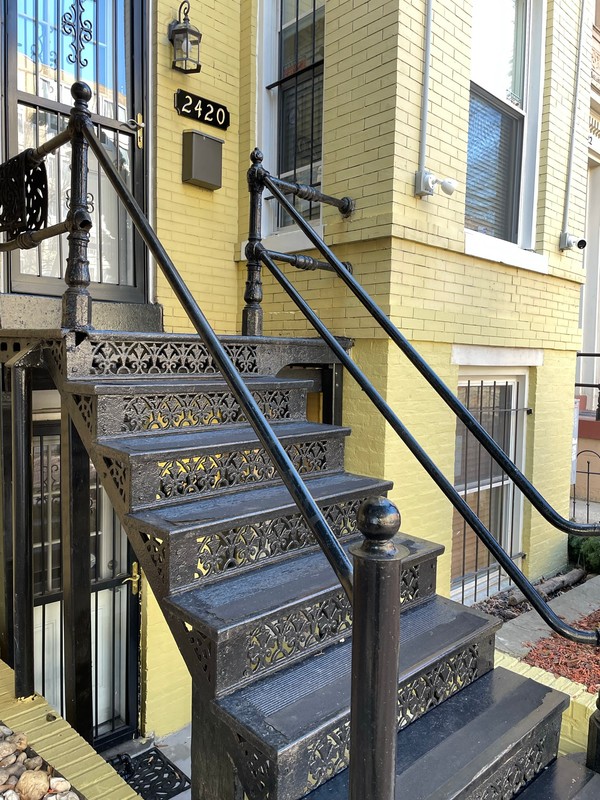
2420 K Street stair riser floral detail
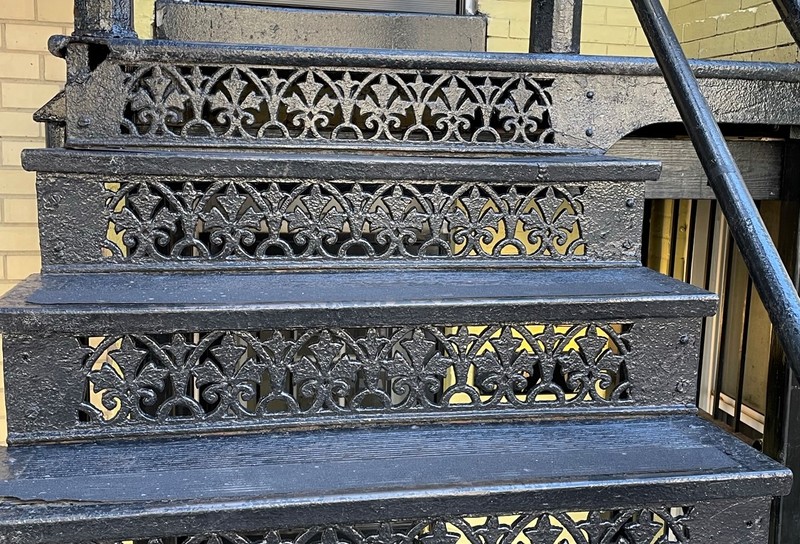
Red brick steps and iron hand rails became more popular in the 1960s
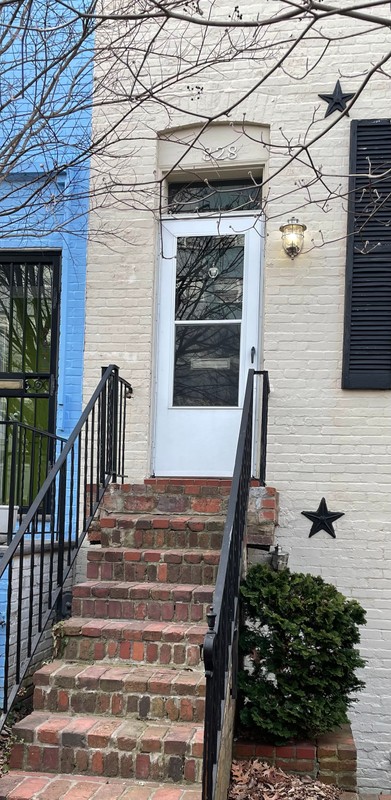
Concrete steps with iron rails were another entry option after the row houses were renovated.
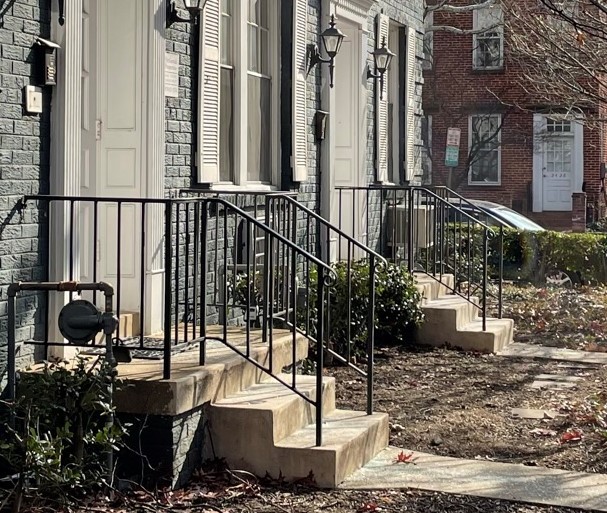
Cast iron rails are no barrier for Kitty Snows, the neighborhood feral cat.
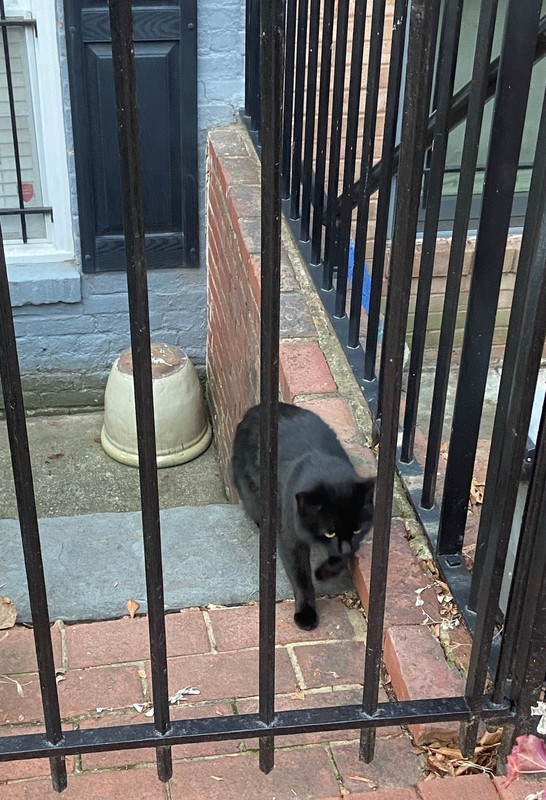
Backstory and Context
Text-to-speech Audio
In the wave of new construction and changes in building materials, many houses transitioned from wood to brick construction. Houses of more modest construction incorporated front entries using relatively inexpensive cast iron stairways with decorative patterns. The open patterns and perforations were originally designed to combine decorative, functional, and economical detailing; to provide elaborate but strong construction; and to reduce the weight and quantity of iron required, thus keeping the price low. Traditionally the stoops, stairs and rails were painted a high gloss Black. In some instances, the decorative newel post caps were painted in gold or silver to accent their design.
England had been casting iron as early as the 1600s and had peaked and declined by the 1850s. In the United States, between the mid-1700s and the mid-1800s, improved technology for the production of cast iron greatly increased the supply, while the expanded technology for its use led to many applications in architecture and engineering. The post-Civil War (after 1865) construction boom created a demand for versatile and hard cast iron pieces.
Washington, D.C. had a few foundries as early at 1876 but there is no record available of items they may have created for front entryways. The decorative riser and newel pieces were ordered from catalogs. "Exterior cast-iron stoops, usually modest in scale, were commonplace in 19th-century domestic architecture," according to the National Park Service's 1992 brochure on "Metal in America's Historic Buildings."
With changes in styles and building materials, front entry stairs evolved into red brick or concrete stoops and steps with iron railings, neither of which are historic.
Sources
Capitol Hill Restoration Guideline: Cast Iron: Firmness, Commodity and Delight (link below)
Capitol Hill Restoration Guideline: Entrance – When a Door is more than a Door (link below)
Foggy Bottom Historic District Walking Tour (links below)
Leone/Vogt, 2022
Leone/Vogt, 2022
Vogt/Leone, 2022
Vogt/Leone, 2022
Leone/Vogt, 2022
